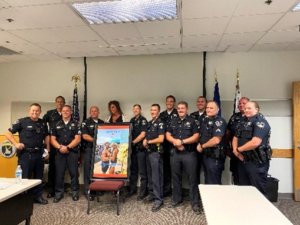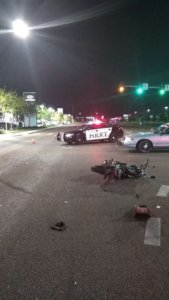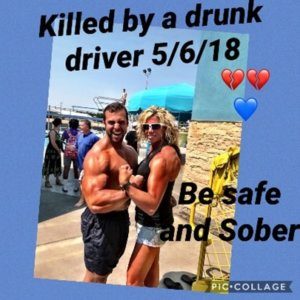- MADD Roll Call Series | MADD Law Enforcement Impaired Driving Roll Call Video Series
- MADD’s 2021 Court Monitoring Report | Effective Court Monitoring
- MADD/Ipsos Poll | Consumers Support Drunk Driving Prevention Systems in Cars
- DRUG-IMPAIRED DRIVING ENFORCEMENT TRAINING (DIDET) | Get support for your DIDET program!
- Drug Impaired Driving Enforcement
Training Opportunities Available | Training in Advanced Roadside Impaired Driving Enforcement (ARIDE) and as Drug Recognition Experts (DRE) - Drugged Driving | Dangers of Prescription Drug Consumption and Driving
- MADD’s Marijuana Survey Report | Misconceptions about Marijuana Consumption and Driving
- Legislation | Check Out Your State’s Legislature
- NHTSA Traffic Safety Facts | Overview of Motor Vehicle Crashes in 2019
- NHTSA | State Alcohol-Impaired Driving Estimates for 2018
- NHTSA Early Estimates of Motor Vehicle Traffic Fatalities | First Quarter of 2020
- NTHSA RFI | Available or late-stage technology under development for impaired driving detection and mitigation
- TOOFS | MADD and Waymo’s Tie-One-On For Safety Holiday Campaign
- 2021 National Lifesavers Conference | Register
- IACP | Traffic Enforcement During the COVID-19 Pandemic Processing DUIs during the COVID-19 Pandemic: Considerations for Law Enforcement Safe, Quick Clearance of Traffic Incidents toolkit Policy Framework for Improved Community-Police Engagement
- Warriors’ Ascent | Providing hope and healing to Veterans and First Responders suffering from Post Traumatic Stress
Law Enforcement Support

To all the patrol officers, detectives, DUI task force officers…
From Susie Spoolstra-Kelley
Zachary Spoolstra’s “Momma”
I first want to thank you for reading my story, and I want to thank you on behalf of my experience with all of the officers that I have come into contact with because of the loss of my Beautiful Child for all that you do every day. I pray for you all as you go out into this world where it seems the regard for life has plummeted and the selfishness has grown. May you think of my story, and the countless others that you have come in contact with when you pull over…yet another impaired driver. May you have the strength and the wisdom to continue to arrest. help to impart consequences to these individuals that make this fateful choice, and may you be able to continue STRONG in this fight to help our roads to be safer for our children, our families and our grandchildren.

I buried my first-born son the day before Mother’s Day, three years ago this May 6th, 2021. Since losing Zach, there have been a myriad of agonizing emotions and unsettling experiences in the aftermath of his tragic death. My story isn’t comfortable or easy to read, but it is what has happened, and I feel it has become my mission to tell my experience of surviving after my precious son, Zachary Spoolstra, was killed by a drunk driver. This has been an awful journey—one that I would not wish on my worst enemy.
Hearing the news from the police officer that my son had been hit and killed by a drunk driver felt like a bullet through my heart. I sank to the floor, my body losing all its strength, my lungs emptying in a loud painful groan, my stomach churning with nausea, my hands cradling my face as I sobbed, trying to keep this horrible reality out. I attempted to stand but my body was a pile of skin and bones on the floor. I wanted to get up and to run— away from this horrible news and from this awful pain that pierced my heart and soul to its core. I knew I could not escape it and I grieved as only a mother who has lost a child would understand. I knew this pain, this sorrow, this emptiness, this Zach-shaped hole in my heart was going to be a part of me for the rest of my life.

Can this be real? My mind repeated over and over as I participated in all the immediate decisions and events that follow losing a loved one. Casket, flowers, headstone, funeral, cemetery, and a whirlwind of other decisions all had to be made. There were brief moments of solace when hundreds of friends and family attended his funeral to honor his life and memory, a testament to the impact my son had on those around him. But unlike many who were able to get their “closure” to this horrid event and emotionally put it all to rest, the agony I have been forced to endure had only just begun.
This next section is what I believe will be so helpful to all of you in law enforcement, it will be helpful to show you what the journey really looks like on behalf of the victim and how un-just the system really is in creating an appropriate “DETERANT” to those who continue to drive while under the influence of alcohol or drugs.
It was not long before I had to attend the beginning of countless court hearings, mediations, the sentencing, and eventually the probation hearing. I felt a deep desire to be at every court appointment because my son could not. I was his representation, his defense, his voice. I had to stand for his honor and ensure that he would not be forgotten. Every appointment was such a traumatic, emotional experience and evoked and triggered every emotion that I had already experienced surrounding the death of my boy.
Each time I went to court, I had to sit close to or right behind the drunk driver who killed Zach. Seeing that person filled me with excruciating anguish. Even now, trying to describe it I cannot capture in words the inescapable, inaccessible pain that had nestled so deep within me. A pain that no doctor could ever reach, a place so untouchable that God alone was the only being who could help.
A mediation was agreed upon instead of a trial, which would have been a lengthier and more demanding process for all of us. I did not want to draw it out and for some odd reason, despite the awful pain that seeing and being next to the man that had sent my Son to Heaven had evoked in me, that hurt never turned to anger. For some reason, God had opened my eyes and helped me to see Him as if he were my own son.
If this were my son, what would I want for him? I would want him to have a consequence large enough to learn a lesson and to experience true repentance by apologizing to the others he hurt, and then to change his life so he would not make the same mistake again.
Through the entire mediation and following sentencing and probation hearing, I was hoping to see these elements in Josh. A penitent man who was truly sorry for the massive damage his crime had created in my family’s lives. Despite my wishes, I never saw him give a compassionate look, nor was there even a quiver of emotion in Josh’s voice as he eventually pleaded guilty to hitting and killing my child. My anguish grew, learning that after hitting Zach, Josh, a doctor, had never even walked over to offer aid to my dying son. Every time I see Josh, now, my mind plays out my son’s last moments of life; Josh sitting in his car while my son bled to death in the middle of the road.
In mediation, there was an agreed upon amount of time in prison, which was 3.5 years fixed and 8.5 years of probation. This decision which took 5 hours of indescribable pain and anguish…NO decision felt good to me…It was not going to bring my son back, So I tried to just stay in the mindset of having this be an example to My other children, that if you do this…that this is the consequence and so forth. The sentencing was scheduled, and I waited patiently for the date to arrive. I thought non-stop about the mediation agreement, and I hoped that during his sentence being served, he would find the sorrow and compassion I wanted to see in him. Believing that Josh would be spending at least 3.5 years in prison made me feel that the state took this crime seriously and had delivered an adequate punishment, that my son’s life had value, and that the court recognized the awful pain of separation my family and I would have to endure until we see him again, and that if my youngest son or other children made the decision as Josh did, that they would KNOW that there would be a serious consequence.
When I arrived at the sentencing, I was surrounded by friends and family. All my remaining children had taken the time to write emotional impact statements that they each read aloud during the sentencing. When I stood to give my victim impact statement, I noticed Judge Southworth never looked at me. I even held a picture of my son Zach, as a visual reminder of why we were all there. He said, “I’ve already seen it, I don’t need to see it again.”
When Josh stood to speak, I was maddened by Judge Southworth’s attentiveness and eye contact. I felt Judge Southworth gave more respect to Josh than he gave to me and my family in our statements. His neglect to hear us in the same manner as the offender— hurt. I struggled to not be overcome with emotion as the sentencing proceeded. I was not angry at Josh, i was angry at the person who was to represent “Fairness” and he only victimized me more.
At the conclusion of the sentencing, Judge Southworth announced that Josh would only spend a max of one year in a rehabilitation prison, with an evaluation at six months to see whether he needed to serve another six months.
Six months passed quickly, and Judge Southworth delivered at the probation hearing for Josh just as he had said—he released him on probation. What a traumatic, disappointing, and soul-crushing experience it was to have justice for my family ripped away. Judge Southworth’s decision seemed to only benefit the impaired driver (over 2 times the legal limit) who had killed my son, and did nothing to recognize, help, comfort, or validate me or My firstborn son, Zach, or the many who were traumatized by the impaired driver who made the fateful choice to drive.
When May hit in 2020, I was mentally preparing that this was going to be a difficult month. Not only is it Mother’s Day, but also the anniversary of Zach’s death. It has also become the first month that I started to receive restitution payments that were ordered to be paid by Josh as part of his sentencing. I saw the check come in the mail and after reading where it came from and knowing what it was, I dropped it like a hot iron. My instinct was to run from it, not willing to deal with the emotional trauma this physical piece of paper represented: that Zach was in fact really gone, and that this was the ONLY acknowledgement I had from Josh that he was trying to make things right. I left it alone until I gathered the strength to finally open it up. Two humiliating $27.50 checks were made out to me as restitution payment for my son and should be made monthly for the next 7-8 years. I was hoping a letter or note would be included in the envelope, expressing his sorrow to me privately instead of a courtroom of strangers. The checks were alone however, cold and impersonal, like money sent to a bill collector.
My mind shouted, no amount of money is worth the life of my child! I grieved while holding on to these two checks, tears flowing freely as my broken heart ripped open again, feeling no comfort, no validation, and no hope. I hated this blood money in my hands. I hated that it was proof that Zach was gone. I ached for him more than ever, wishing so hard that I could go back in time and save Zach from this fate and change this miserable existence of life without him.Since then, currently, I have gotten together with Josh. The hope and prayers that I had, had to receive an embrace, to see a sorrowful heart were answered. It was SO Much harder to think that the person who had killed my son, who had not even walked over to him on the road to see if he could perform life saving measures, that he did not care. I never saw ANY hope in any of the court proceedings that he was sorry. But deep down in my heart, I still had a burden to pray for him and the HOPE that God instilled in my heart was answered. I saw a boy that was shattered by what he had done, and he wanted to do whatever he could to make it as right as it could be. I can embrace the two feelings at the same time, I can forgive Josh and also be extremely broken by spending time with him at the same time… God has given me so much Grace and forgiveness for him, and in our conversations over the last 11 months, he has been able to share with me the trauma he has suffered and lives with every day…It is nothing like what I now have to live with, Mine is a Life sentence…However: I feel compelled to share the power of My story from both sides, it’s rare that a convicted Drunk Driver wants to reach out and help others, and with him to share the trauma of driving impaired and having to live with the consequence along with the consequences I have to live with forever, until I see my Son again will be SO impactful.

Thank you for taking the time to read my story, my hope in sharing the most painful and devastating experience in my life, is for even one life to be saved It is worth the pain. Of course, My Hope is that thousands will be changed not only by the devastating loss of my Son, but the Transforming, Divine Power of Forgiveness as well as the Power for people to hear both sides of the tragedy.
Much Love,
Susie Spoolstra-Kelley
Zachary Spoolstra’s “Momma”
Zach, Forever 24
3/10/1994-5/06/2018

Brian Ursino, Director of Law Enforcement
American Association of Motor Vehicle Administrators
Assistant Chief, Washington State Patrol (retired)
A person who has “bought into” the mission statement of their employer conducts themselves consistently with that mission statement. But what happens if that person works for a law enforcement agency whose mission is impacted by external factors, such as political influences? I will come back to that question.
I served for 30-years with the Washington State Patrol (WSP), ascending the ranks from trooper to assistant chief. Since March 2010, I have served as the director of law enforcement programs for the American Association of Motor Vehicle Administrators (AAMVA). Founded in 1933, AAMVA represents state, provincial, and territorial officials in the United States and Canada who administer and enforce motor vehicle laws. What that means more specifically, is that every motor vehicle agency (MVA or DMV) and every state and provincial law enforcement agency in North America is an AAMVA member.
From 2008 to 2014, a period overlapping my time with the WSP and AAMVA, I served on the MADD National Board of Directors. In 2013, I chaired the MADD Board’s Strategic Planning Subcommittee which produced MADD’s first strategic plan that incorporated the fight against drugged driving to MADD’s mission statement. Why did MADD elect to expand its mission? We recognized that poly drug-use (combination of alcohol with other drugs) was growing more prevalent and we could no longer address alcohol impaired driving as an isolated issue – any impaired driving is impaired driving.
Crash data shows that the most common poly drug-use combination is alcohol with marijuana (cannabis). Predictably, with more and more states legalizing recreational marijuana, crashes involving drivers impaired by marijuana alone or marijuana in combination with alcohol are increasing. Washington and Colorado were the first two states to legalize recreational marijuana. Data from the Washington Traffic Safety Commission (WTSC) in 2016 demonstrates that the percentage of drivers involved in fatal crashes who tested positive for cannabis increased by more than 100% from 2010 (pre-legalization) to 2014 (post-legalization).
The complexity of policing has grown exponentially since I began my career in 1980. Today, law enforcement is grappling with multiple issues that erupted in the aftermath of the May 25, 2020 death of George Floyd and from subsequent protests and riots nationwide. The ensuing months have brought public and political backlash with widespread calls for police reform and for defunding of police. Unfortunately, I see calls for police reform AND defunding the police as an oxymoron. True police reform will require investment in every system that drives a law enforcement agency’s culture – from hiring, training and evaluation processes, to equipment (such as body cams) and much more. It is critical that adequate funding remains for all these areas to properly train officers in fair and just traffic safety enforcement and education.
Back to mission. When law enforcement administrators are required to reduce their agency budget, often among the first casualties are specialized traffic units, DUI squads, and educational outreach programs, just to name just a few. Officers who may have been fully engaged in traffic law enforcement – and more specifically impaired driving education and enforcement – are finding their past work priorities falling out of alignment with the mission when their agencies are forced to cut (or worse eliminate) impaired driving education and enforcement activities.
What can an individual officer do? First, I doubt you are alone. Trust that there are like minded officers throughout your agency (and chain of command) who are frustrated by mission confusion. Band together. Know the data – are your impaired driving crashes, injuries, and fatalities rising? Without wandering outside the lines of agency policy, officers can be a constructive part of the media narrative that shapes public opinion.
Engage with your local MADD office volunteers, partners from your state’s office of highway safety, and other interested stakeholders to ensure your elected officials know that reducing police budgets is not serving their constituencies well. Every state has a strategic highway safety plan, and many of those plans include a Target Zero or Vision Zero initiative calling for zero traffic fatalities by a specific year. Just one proven strategy that every plan I have seen contain is targeted traffic law enforcement with impaired driving education and enforcement as a key component of the plan. Is your state on track to meet its injury and fatality reduction milestones? If not, hold your elected officials accountable. Those goals cannot be met if police agencies are having their funding slashed.
Only working together as a collective can we ensure A Future of No More Victims!

MADD May 2021 Officer of the Month
The 362 Officers who made the Ultimate Sacrifice and gave their lives in the line of duty protecting America in 2020.
“It is not how these officers died that made them heroes, it is how they lived.”
In 1962, President John F. Kennedy signed Public Law 87-726 designating May 15 as Peace Officers’ Memorial Day, and the week in which May 15 falls as National Police Week. While the actual date changes from year to year, National Police week is always the calendar week, beginning on Sunday, which includes May 15. This year National Police week is May 9-15, 2021.
In honor of 2021 National Police Week and Law Enforcement Memorial Day, MADD honors, as its May 2021 Officer of the Month, the 362 law enforcement officers who made the ultimate sacrifice and died in the line of duty in 2020. We honor the fallen and their families, and we are grateful for the sacrifices they made to keep our communities safe.
The National Law Enforcement Officers Memorial is centered in the 400 block of E Street, NW, Washington, DC and is the nation’s monument to law enforcement officers who have died in the line of duty. Dedicated on October 15, 1991, the Memorial honors federal, state and local law enforcement officers who have made the ultimate sacrifice for the safety and protection of our nation and its people.
The Memorial features two curving, 304-foot-long blue-gray marble walls. Carved on these walls are the names of more than 22,000 officers who died in the line of duty throughout U.S. history, dating back to the first known death in 1786. Unlike many other memorials in Washington, DC, the National Law Enforcement Officers Memorial is ever-changing: new names of fallen officers are added to the monument each spring, in conjunction with National Police Week.
“It is not how these officers died that made them heroes, it is how they lived.”
Vivian Eney Cross, Survivor
“The wicked flee when no man pursueth: but the righteous are as bold as a lion.”
Proverbs 28:1

“Carved on these walls is the story of America, of a continuing quest to preserve both democracy and decency, and to protect a national treasure that we call the American dream.”
President George H.W. Bush

The National Law Enforcement Officers Memorial Fund (NLEOMF) (along with Concerns of Police Survivors, the Fraternal Order of Police and the FOP Auxiliary) is a principal organizer of National Police Week, the annual tribute to law enforcement service and sacrifice that is held each May in Washington, DC.
This year, hundreds of names will be engraved on the walls of the National Law Enforcement Officers Memorial in Washington, DC, which will bring the total to 22,611 officers killed in the line of duty memorialized there.
The NLEOMF will host a Virtual Candlelight Vigil on May 13 at 8:00 p.m. to memorialize those who sacrificed all for their communities. National Police Week in-person events will be held October 13-17, 2021 in Washington, DC. The rescheduling of these events is due to the inability to secure necessary permits in time for in-person gatherings, because of the ongoing COVID-19 restrictions. The in-person National Police Weekend in October will offer the same honor, remembrance, and peer support as National Police Week, while allowing law enforcement, survivors, and citizens to gather and pay homage to those who gave their lives in the line of duty.
To see a full listing and the stories of the 362 law enforcement heroes that made the ultimate sacrifice while protecting American Citizens in 2020, click on the below link.
Newsletter Archives
MADD extends our deepest condolences to the agencies and families who have lost officers and loved ones in the line of duty
-

 Officer Miguel Cano was killed in a vehicle crash at Bristol Parkway north of Green Valley Circle in Culver City, California, at 12:30 a.m.
Officer Cano and his partner had just...
Read More
Officer Miguel Cano was killed in a vehicle crash at Bristol Parkway north of Green Valley Circle in Culver City, California, at 12:30 a.m.
Officer Cano and his partner had just...
Read More
-

 Deputy Sheriff Devin Mason was shot and killed while responding to a call on Old Timers Court in Darlington County.
At 1:30 a.m., Deputy Mason and another deputy arrived...
Read More
Deputy Sheriff Devin Mason was shot and killed while responding to a call on Old Timers Court in Darlington County.
At 1:30 a.m., Deputy Mason and another deputy arrived...
Read More
-

 Detention Officer Francisco Flattes was shot and killed by a federal inmate at the Erlanger Western Carolina Hospital at 3990 E. U.S. Highway 64 Alt in Murphy, North Carolina.
Officer Flattes...
Read More
Detention Officer Francisco Flattes was shot and killed by a federal inmate at the Erlanger Western Carolina Hospital at 3990 E. U.S. Highway 64 Alt in Murphy, North Carolina.
Officer Flattes...
Read More
-

 Police Officer Kendall Corder succumbed to gunshot wounds he received when he was ambushed at North 24th Place and West Garfield Avenue in Milwaukee on June 26, 2025.
Around 9:00 p.m.,...
Read More
Police Officer Kendall Corder succumbed to gunshot wounds he received when he was ambushed at North 24th Place and West Garfield Avenue in Milwaukee on June 26, 2025.
Around 9:00 p.m.,...
Read More
-

 Undersheriff Brandon Gaede was shot and killed while arresting a subject at 899 1st Street in Phillipsburg.
After receiving a call about illegal fireworks being detonated around 9:28 a.m., Undersheriff Gaede...
Read More
Undersheriff Brandon Gaede was shot and killed while arresting a subject at 899 1st Street in Phillipsburg.
After receiving a call about illegal fireworks being detonated around 9:28 a.m., Undersheriff Gaede...
Read More
-

 Sergeant Shiou Deng was struck and killed by the driver of a vehicle while assisting at the scene of a vehicle crash on the southbound lanes of Interstate 405 at...
Read More
Sergeant Shiou Deng was struck and killed by the driver of a vehicle while assisting at the scene of a vehicle crash on the southbound lanes of Interstate 405 at...
Read More
-
 Lieutenant Eddie Mays suffered a fatal heart attack while arresting a man during a domestic call on West Crumb Avenue in Bernie at 4:53 p.m.
The subject was arrested...
Read More
Lieutenant Eddie Mays suffered a fatal heart attack while arresting a man during a domestic call on West Crumb Avenue in Bernie at 4:53 p.m.
The subject was arrested...
Read More
-

 Police Officer Gabriel Facio died six days after being shot in the face by a driver who had been pulled over for brandishing a gun in a road-rage incident in...
Read More
Police Officer Gabriel Facio died six days after being shot in the face by a driver who had been pulled over for brandishing a gun in a road-rage incident in...
Read More
-

 Police Officer Krystal Rivera was shot and killed during a confrontation with an armed subject.
While on routine patrol at 9:50 p.m., officers attempted to stop a man they suspected...
Read More
Police Officer Krystal Rivera was shot and killed during a confrontation with an armed subject.
While on routine patrol at 9:50 p.m., officers attempted to stop a man they suspected...
Read More
-

 Sergeant J.D. White was struck and killed while escorting a funeral procession.
He was flown to Memorial Hermann Hospital in Houston, where he succumbed to his injuries.
Sergeant White had served...
Read More
Sergeant J.D. White was struck and killed while escorting a funeral procession.
He was flown to Memorial Hermann Hospital in Houston, where he succumbed to his injuries.
Sergeant White had served...
Read More
For a complete listing of Officers lost in the line of duty, please visit: www.odmp.org
Newsletter Archives
Resources
- MADD Roll Call Series | MADD Law Enforcement Impaired Driving Roll Call Video Series
- MADD’s 2021 Court Monitoring Report | Effective Court Monitoring
- MADD/Ipsos Poll | Consumers Support Drunk Driving Prevention Systems in Cars
- DRUG-IMPAIRED DRIVING ENFORCEMENT TRAINING (DIDET) | Get support for your DIDET program!
- Drug Impaired Driving Enforcement
Training Opportunities Available | Training in Advanced Roadside Impaired Driving Enforcement (ARIDE) and as Drug Recognition Experts (DRE) - Drugged Driving | Dangers of Prescription Drug Consumption and Driving
- MADD’s Marijuana Survey Report | Misconceptions about Marijuana Consumption and Driving
- Legislation | New York .05% BAC Vermont .05 Per Se Law Vermont ignition interlocks Vermont advanced technology
- NHTSA Traffic Safety Facts | Overview of Motor Vehicle Crashes in 2019
- NHTSA | State Alcohol-Impaired Driving Estimates for 2018
- NHTSA Early Estimates of Motor Vehicle Traffic Fatalities | First Quarter of 2020
- NTHSA RFI | Available or late-stage technology under development for impaired driving detection and mitigation
- TOOFS | MADD and Waymo’s Tie-One-On For Safety Holiday Campaign
- 2021 National Lifesavers Conference | Register
- IACP | Traffic Enforcement During the COVID-19 Pandemic Processing DUIs during the COVID-19 Pandemic: Considerations for Law Enforcement Safe, Quick Clearance of Traffic Incidents toolkit Policy Framework for Improved Community-Police Engagement
- Warriors’ Ascent | Providing hope and healing to Veterans and First Responders suffering from Post Traumatic Stress



 Officer Miguel Cano was killed in a vehicle crash at Bristol Parkway north of Green Valley Circle in Culver City, California, at 12:30 a.m.
Officer Cano and his partner had just...
Officer Miguel Cano was killed in a vehicle crash at Bristol Parkway north of Green Valley Circle in Culver City, California, at 12:30 a.m.
Officer Cano and his partner had just... 
 Deputy Sheriff Devin Mason was shot and killed while responding to a call on Old Timers Court in Darlington County.
At 1:30 a.m., Deputy Mason and another deputy arrived...
Deputy Sheriff Devin Mason was shot and killed while responding to a call on Old Timers Court in Darlington County.
At 1:30 a.m., Deputy Mason and another deputy arrived... 
 Detention Officer Francisco Flattes was shot and killed by a federal inmate at the Erlanger Western Carolina Hospital at 3990 E. U.S. Highway 64 Alt in Murphy, North Carolina.
Officer Flattes...
Detention Officer Francisco Flattes was shot and killed by a federal inmate at the Erlanger Western Carolina Hospital at 3990 E. U.S. Highway 64 Alt in Murphy, North Carolina.
Officer Flattes... 
 Police Officer Kendall Corder succumbed to gunshot wounds he received when he was ambushed at North 24th Place and West Garfield Avenue in Milwaukee on June 26, 2025.
Around 9:00 p.m.,...
Police Officer Kendall Corder succumbed to gunshot wounds he received when he was ambushed at North 24th Place and West Garfield Avenue in Milwaukee on June 26, 2025.
Around 9:00 p.m.,... 
 Undersheriff Brandon Gaede was shot and killed while arresting a subject at 899 1st Street in Phillipsburg.
After receiving a call about illegal fireworks being detonated around 9:28 a.m., Undersheriff Gaede...
Undersheriff Brandon Gaede was shot and killed while arresting a subject at 899 1st Street in Phillipsburg.
After receiving a call about illegal fireworks being detonated around 9:28 a.m., Undersheriff Gaede... 
 Sergeant Shiou Deng was struck and killed by the driver of a vehicle while assisting at the scene of a vehicle crash on the southbound lanes of Interstate 405 at...
Sergeant Shiou Deng was struck and killed by the driver of a vehicle while assisting at the scene of a vehicle crash on the southbound lanes of Interstate 405 at...  Lieutenant Eddie Mays suffered a fatal heart attack while arresting a man during a domestic call on West Crumb Avenue in Bernie at 4:53 p.m.
The subject was arrested...
Lieutenant Eddie Mays suffered a fatal heart attack while arresting a man during a domestic call on West Crumb Avenue in Bernie at 4:53 p.m.
The subject was arrested... 
 Police Officer Gabriel Facio died six days after being shot in the face by a driver who had been pulled over for brandishing a gun in a road-rage incident in...
Police Officer Gabriel Facio died six days after being shot in the face by a driver who had been pulled over for brandishing a gun in a road-rage incident in... 
 Police Officer Krystal Rivera was shot and killed during a confrontation with an armed subject.
While on routine patrol at 9:50 p.m., officers attempted to stop a man they suspected...
Police Officer Krystal Rivera was shot and killed during a confrontation with an armed subject.
While on routine patrol at 9:50 p.m., officers attempted to stop a man they suspected... 
 Sergeant J.D. White was struck and killed while escorting a funeral procession.
He was flown to Memorial Hermann Hospital in Houston, where he succumbed to his injuries.
Sergeant White had served...
Sergeant J.D. White was struck and killed while escorting a funeral procession.
He was flown to Memorial Hermann Hospital in Houston, where he succumbed to his injuries.
Sergeant White had served...